Remembrance of Things PastWilliam Ebden Methven19 Ebden Avenue, Black RockBy Beth Page, Buxton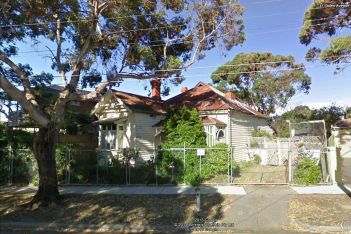
"– a stroll down memory lane."Those of us lucky enough to have spent much of our life around the area between Sandringham and Beaumaris are well aware of the beauty surrounding us. Those just visiting are also impressed. Imagine what it must have been like when Bill Methven was a lad growing up in the native bushland of Black Rock. William and Joan Methven senior built their house, No. 19 Ebden Avenue, in 1910 when Black Rock was a part of Cheltenham; however let us go back a little in time… William senior was a plumber by trade, but in a serious career move he bought a hotel called 'The Rising Sun'. It was situated on the corner of Richardson and Lygon Street, Carlton. (Until recently the hotel still had the 'Methven' name over the door.) After visiting the Bayside village of Black Rock, William and Joan fell in love with the area and decided to settle in 1909. They lived in a cottage on Balcombe Road called 'Cooee' until their house in Ebden Ave was built. Most of the houses in the area were holiday retreats. 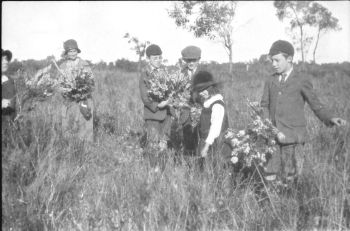
Wildflower gathering in Black Rock 1925 - From Mrs Mauley, Baxter Village. S181N17A In 1911 William Ebden Methven (Bill) was born in this family home. His middle name Ebden so called because he was the first person born in Ebden Avenue. Their home was surrounded by bush, typical of the Black Rock beach area: the coastal tea-tree, a variety of acacias, the drooping feather-like foliage of the she-oaks and close to the beach along the gullies and streams running into the bay, the native honeysuckle. Further inland the native cherry tree grew as did the small straggling Eucalyptus – E. viminalis, with the occasional Box tree. The heath land consisted of many varieties of flowering bushes and shrubs. In swampy tracts the fragrant melaleuca ericifolia grew. Many visitors to the area took home a beautiful bunch of wildflowers which would include Egg and Bacon, Wedding Bush, pink red and white Heath, Blue Pincushion and Chocolate Lillies to name a few. For orchid enthusiasts the Spider Orchid and a variety of Greenhoods could be found. 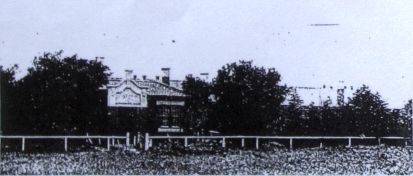
Black Rock State School, c.1936. S84N13 What a wonderful environment for a boy to grow up in. Imagine Bill and his sister Muriel running to the Black Rock State school cutting across the paddocks, through the heath and flowering shrubs to Arkaringa Crescent. The school had opened in 1910. The first headmaster was Mr Richardson. After his primary education Bill went to Brighton Grammar. 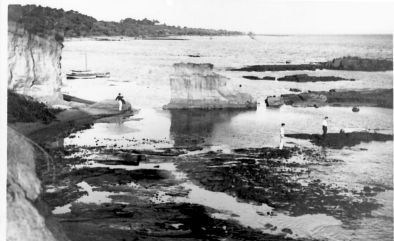
Quiet Corner with eroding point. McGregor Rock behind. Late 1920s. S50N07 Bill's other playground was the beach, between Black Rock and Quiet Corner. Bill remembers the cliffs at Quiet Corner which have since eroded away, but this beach was always a safe place to swim. He remembers where the fishing boats could be hired and the big winch that pulled the boats up onto the shore near the rocks at the end of the cliffs at Quiet Corner. The fishing boats were owned by Mr McGregor — the rock at Quiet Corner was named after him. Bill especially remembers 1934: the year Kingsford Smith disappeared there was a terrible storm that swept up the bay washing away the bathing boxes, flooding Beach road and sweeping up through the bushes destroying the ramp at Black Rock House. Bill's father managed to save their bathing box from totally disintegrating after the storm subsided. Bill also remembers a fierce storm in 1983. 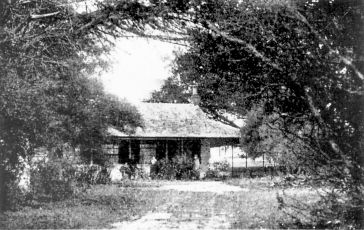
Black Rock House c.1920. S81N44A Bill has an interest in Black Rock House, living opposite it all his life. Black Rock House was built in 1856 for Charles Hotson Ebden. Ebden bought two lots of land totalling 112 acres adjoining the eastern shore of Port Phillip Bay. The house living quarters of six rooms and a long wide hallway were built with brick and timber walls and a slate roof. The rock for the high courtyard walls was quarried on the beach at nearby Quiet Corner. The original wallpaper depicted scenes from "Uncle Tom's Cabin". The magnificent Moreton Bay fig tree was planted by Charles Ebden in 1853. 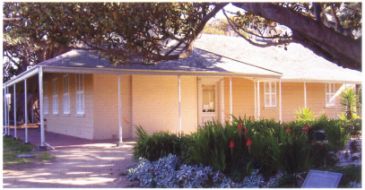
Black Rock House 2013 - From Bendigo Bank Newsletter. Bill remembers the residents of Black Rock House, but not all their names; however he remembers in 1931–37 Professor (later Sir Peter) MacCallum lived there and did much to restore the building. Bill also remembers the owners from 1942–1972, Mr and Mrs Nutting. In 1974 the property was purchased by the City of Sandringham Council for $66,000 of which two-thirds was provided by a grant from the Victorian Government. By then the land area of the estate had been reduced to about 20,000 square feet and it had lost the frontage to Beach road with its handsome gateway and extended driveway. Bill remembers Black Rock House was a boarding house for some time. As Bill grew up his life became wrapped around the local church. However to begin with there was no [presbyterian] church to attend until in 1921 when the Rev. Joseph Hay brought a small building from Broadmeadows that had been used as the local 'clink'. It was boarded up with tin. This was to become the Presbyterian church at 12 Second Street. Bill, then 10 years old, and his sister Muriel used to deliver pamphlets advertising the possibility of a [presbyterian] church opening in Black Rock, and helped raise money to replace the tin with glass windows. This finally became a reality. Later they built a small hall behind the church for the use as a local Kindergarten. Bill when a young man became the pianist for the Presbyterian Girls Association (PGA) and this was later changed to the PFA to include boys. Bill also became the church organist. Mrs Lay organised the Ladies Guild. Bill thinks her house is still standing in Bayview Crescent. Teachers in the Sunday school were George Ridley, Elvie Berry and Bibi Waters (who was also in the table tennis team). Margaret Lowe taught the Kinders, as did Joan Illingworth whose father was the choir master and her mother the pianist. Other organists with Bill were Arthur Hands and Rose Hamilton. Sunday school at 10am, church at 11am. Sunday School Anniversaries were popular for which the young people ran a special concert on the Tuesday night. In the 1930s during the war they held a 'Kings Call to Worship', a special service. The church would be overflowing with 120 people. Bill remembers particularly his playing of 'Onward Christian Soldiers'. There was a tennis court and a strong tennis club, of which Bill was a member. The Rev. H A Porter was the minister of this combined parish of Black Rock/Cheltenham Presbyterian. Bill also remembers a most happy time when he and his sister Muriel took part in a play that was a great success throughout Cheltenham, Black Rock and Sandringham. There were approximately eight actors who depicted Faith, Hope, Charity and Light. Muriel played the part of 'Light' and Bill was the organist. Early in the 1950s they built a new Church Hall and later shifted it to a site opposite the Service Station in Balcombe Road. The minister was the Rev Pye. In 1958–59 the building was pulled down on account of it being too small. 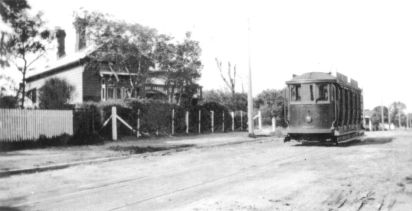
The Methven Home, built 1910. Four-wheel motorised tram No.22 passing their home in 1931. This was the official car that had opened the Sandringham–Black Rock line on 10th March 1919. The line to Beaumaris closed on 31 August 1931, though the Sandringham–Black Rock section continued until 5th November 1956. From W E Methven. Bill and his family could watch history being made from just outside their house especially as far as the transport system was concerned. The famous local photo of the old tram stopping outside Bill's home was the old 'dog box' style tram which was in the last year of its run in 1931 during the Great Depression. This tram had a smoking and a non-smoking compartment. In the same year they ran a more modern tram, also photographed outside Bill's home, which ceased to run twelve months later. It ran from Sandringham to Black Rock and cost of the fare was 3d; one paid 1d more if going on to Beaumaris. The terminus was behind the Beaumaris Hotel. In 1911 Black Rock shops consisted of a Milk Bar (owned by Mrs White), an Estate Agency (F N Gipps) which was knocked down for the tram line; and Matthews the butcher and Simmons the grocery store manager. 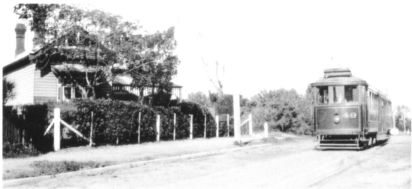
Bogie tram No.49 running on the Beaumaris line outside 19 Ebden Avenue. From W E Methven. In the early 1920s there was talk of an electric train that would run from Sandringham station to the Beaumaris Hotel as there were plenty of open spaces, though they would have to go through the golf course across Dalgetty Road through the open bush to Beaumaris. However too much of the road through Black Rock, especially around the corner of Bluff Road into Balcombe Road would have to be cut off, including shops, so the plans were scrapped. Black Rock was becoming quite a village in the '20s. Bill has a phenomenal memory and can visualise exactly where the shops were in the twenties and the names of the shop owners. In 1923 Moran & Cato opened their grocery store next to the grocer Mr George Bellard. Also there was a National Liqueur Store owned by Bob and Rita Coltard. The delicatessen was owned by the Swift family who also owned the Café next door. Matthews the butcher and Sammonds the chemist (now Burgess). A hardware shop owned by Bob Ridders where 'Taco Bill' is now. There was a Paper shop and Post Office. Gordan Shawcross owned the Hay and Corn Store where the Fishing shop now stands and Miss Sidebottom had the Drapery. Mrs Shearer owned a Putting Green and a Cake Shop opposite the Life Saving Club on Beach Road. In 1941 (the year the Japanese entered the war) a bush fire swept through the scrub and tea-tree, burning many homes. There was a theory that it began near Dalgetty and Balcombe Roads. Councillor Yott, who had a lovely home on the corner of Beach Road and Tramway Parade, managed to save his home from the flames. Bill said it was a frightening experience. May Else entered Bill's life after a romantic meeting while on holidays at Rosebud. May came from Woodend where she lived on the family farm. They were in a beautiful spot only four miles from Hanging Rock. May's mother was widowed young, and with six children to look after she had a tough time. May was 9 yrs old when her dad died. After leaving school May worked as a waitress in Albert Park but found her real talent in sewing, working for Lou Solomon and Lettie Lynton making samplers. The farm has now become categorized by the National Trust as significant. Bill and May married in 1958 and moved into the family home in Ebden Avenue. Bill loved dancing and when a single lad, joined a dance club held in the Horticulture Hall in Lygon Street North Carlton. He took dancing lessons with George Clarke in the Life Saving Club at Black Rock. May joined him going to dances at the Malwood Club in Mordialloc. May joined the CWA Black Rock in 1977 and has remained a loyal member ever since. 1965 the Rev Firth, who had just arrived from the Isle of Fife, was appointed as minister at the Presbyterian Church in Balcombe Road. In 1977 many of the members of the Presbyterian church joined the Methodists on the corner of Balcombe and Central Ave. — later to become 'United'. The last minister at the Presbyterian church at the time it closed was Rev Alan Thompson. The first minister at the United Church Black Rock was the Rev Les Churchill. Bill and May joined the Uniting Church becoming strong supporters, committed to serving their Lord in any way possible. Bill has served his church as an Elder for 50 years and still is today. Bill went to work as a grocer in the Melway Store in 1930 and later in Foodland in Charman Road for Les Meagher from 1976–1987 and for a while with 'Tom the Cheap' at Black Rock. Bill had a change of job working at Homfrays Carpets for 11 years, and then took his Long Service Leave. Katrina their first daughter was born and lived at home at Ebden Avenue until married. She now has one daughter and two sons of her own. Anita their second daughter, has three daughters. Both girls were teachers in the Sunday School at St Andrew's by the Sea, and keen tennis players. The Methven home stands as a reminder of a past era, a building of character and style from a time when buildings included the artistic touches! The beautiful ceilings in Bill's home are also reminders of things long past. The Victorian era where the creator of ceilings was not just a plasterer but a true craftsman / artist. Bill also takes pride in his back garden where vegetables happily grow with the flowers under the blossoming fruit trees. Both Bill and his dad were keen gardeners and belonged to the Cheltenham Garden Club. Bill's dad died in 1953, his mother in 1956. Bill and May remain faithful to the village of Black Rock that has been for so long the corner stone of their life together. St. Andrew's by the Sea is also privileged to have this remarkable couple as loyal caring members of the congregation. I am honoured to have been entrusted with sharing their family history with you. I hope you enjoy seeing through Bill's childhood eyes a Black Rock in its infancy. Beautiful in sea and in land, pristine in its youthfulness and full of promise for those who wanted to settle there. Beth PagePostscriptAt the 2001 Federation Festival presented by the Friends of Black Rock House, Bill was invited to raise the flag at an official ceremony in the Black Rock House garden attended by the Mayor, Councillors and politicians. Sadly, May Methven died soon after the occasion. In 2004, at an event to celebrate the 25th anniversary of the Friends of Black Rock House, Bill was awarded Honorary Membership of the group, as a tribute to his loyal support. In 2010, after Bill’s death and sale of his house, the Friends of Black Rock House were invited to choose a memento of a special neighbour. President Carolyn Brown chose the beautiful red velvet table protector which now covers the Black Rock House dining room table. Carolyn has sewn the history of this precious item in one corner of the cover. Bill and May’s daughter Katrina later advised that this table protector belonged to her father’s parents, making it now well over one hundred years old. The Methven house was demolished in 2013. Thanks to Cheryl Threadgold for these points. |